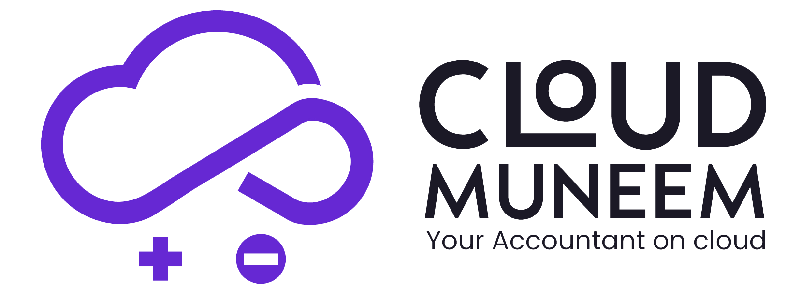Welcome to WordPress. This is your first post. Edit or delete it, then start writing!
Streamline Your Accounting: Migrate from Tally to Zoho Books
CM admin
–
November 20, 2024
In the evolving world of accounting technology, businesses seek solutions that provide both flexibility and efficiency. Tally, a long-standing staple in accounting software, has served many companies well for years. However, as businesses grow, they often need features that cater to more dynamic financial reporting, cloud-based access, and integrations. Zoho Books offers an innovative alternative that meets the demands of modern businesses, facilitating improved collaboration, comprehensive reporting, and seamless integration with other business tools.
In this article, we’ll explore the benefits of switching from Tally to Zoho Books, discuss the step-by-step migration process, and highlight how Zoho Books can streamline your accounting operations.

Why Switch from Tally to Zoho Books?
-
Cloud-Based Accessibility
One of the biggest advantages of Zoho Books over Tally is its cloud-based platform. While Tally users often rely on localised installations, Zoho Books allows businesses to access financial data from anywhere, on any device, through a secure internet connection. This is particularly beneficial for remote teams and managers who need real-time insights without being physically present at the office.
-
Real-Time Collaboration
Zoho Books enables multiple users to work on the same data simultaneously, improving collaboration across departments. With role-based access permissions, you can ensure that users only access the data relevant to their tasks, enhancing data security and teamwork.
-
Integration with Other Tools
Tally operates as a standalone accounting tool with limited integration capabilities. In contrast, Zoho Books integrates seamlessly with over 50 apps in the Zoho ecosystem, including CRM, inventory management, and HR solutions. This integration simplifies workflows, making it easy to connect accounting data with other business functions and allowing smoother automation of tasks.
-
Enhanced Reporting and Analytics
While Tally provides basic reporting features, Zoho Books excels with advanced reporting and customization options. Users can generate more detailed financial insights, segment data for different departments or regions, and make data-driven decisions with better visualisations and custom reporting tools.
-
User-Friendly Interface and Simplified Compliance
Zoho Books has an intuitive, user-friendly interface that simplifies accounting processes for novice users. It also offers features tailored to compliance, such as built-in GST support in India and VAT handling for other regions, automating complex tax calculations that Tally may not handle as effectively.
Migration Process: Moving from Tally to Zoho Books
Migrating from Tally to Zoho Books may seem daunting, but a step-by-step approach can make it manageable. Here’s a roadmap to guide you through a smooth transition.
Step 1: Evaluate Your Data
Before initiating the migration, review the data in your Tally software. Identify essential data types, such as customer and supplier details, chart of accounts, inventory, and financial transactions. This evaluation helps eliminate redundant or outdated information and prepares you for a clean start in Zoho Books.
Step 2: Set Up Your Zoho Books Account
If you haven’t already, set up an account with Zoho Books. During the account creation process, Zoho Books will ask for specific information about your business structure, such as tax preferences, financial year, and currency. Configuring these details beforehand will ensure the imported data aligns with your accounting standards.
Step 3: Customise Chart of Accounts
Create or customise your chart of accounts in Zoho Books to reflect the categories in Tally. While Zoho Books has a standard chart of accounts, adapting it to match your existing accounts in Tally will simplify the migration process and make reports in Zoho Books comparable to those in Tally.
Step 4: Export Data from Tally
Exporting data from Tally typically involves generating CSV or Excel files for different categories of information, such as customer data, vendor details, and account balances. Tally allows users to export lists and reports by accessing the display menu and choosing the export format (such as XML or CSV). Organise these files carefully, as you will need them to upload data into Zoho Books.
Step 5: Import Data into Zoho Books
Zoho Books provides a simple import process to transfer data from your CSV or Excel files. To import data:
- Go to the relevant module (e.g., customers, vendors, or accounts) within Zoho Books.
- Select the import option, choose the file, and map each column from the CSV file to the respective fields in Zoho Books.
- Preview the data to ensure accuracy, then complete the import.
Repeat this process for each data type, ensuring accurate mapping for a seamless transfer.
Step 6: Reconcile and Verify Account Balances
Once you’ve migrated the data, check the account balances in Zoho Books to ensure they match those in Tally. Reconciling these balances helps detect discrepancies early, allowing you to correct any issues before starting with Zoho Books.
Step 7: Train Your Team
Switching to a new accounting system requires your team to be familiar with Zoho Books’ interface and features. Provide hands-on training sessions, walkthroughs, and reference materials to support team members. Zoho offers a range of tutorials and resources that can guide your team through key functionalities.
Features of Zoho Books for Streamlined Accounting:
After migrating to Zoho Books, you can leverage its rich features to enhance productivity and streamline operations.
-
Automated Workflows
Zoho Books allows users to create custom workflows that automate repetitive tasks, such as sending invoices, reminders, or payment receipts. This automation saves time, reduces errors, and ensures that customers and vendors receive timely communication.
-
Expense and Budget Tracking
Zoho Books provides comprehensive tools for tracking expenses, setting budgets, and categorising transactions. This feature offers real-time insights into spending and helps you manage budgets more effectively.
-
Invoice Customization and Payment Integration
With Zoho Books, you can create professional, branded invoices and set up automated payment reminders. Additionally, it integrates with multiple payment gateways, enabling clients to pay invoices directly online, improving cash flow.
-
Real-Time Financial Dashboards
The financial dashboard in Zoho Books provides an at-a-glance view of your business’s financial health, showing key metrics like receivables, payables, and cash flow. This dashboard simplifies decision-making by presenting real-time data in a visually appealing format.
-
Built-In Tax Compliance
Zoho Books handles regional tax requirements, such as GST, VAT, and sales tax, making it ideal for businesses that need automated tax compliance. It also provides detailed tax reports, simplifying the tax filing process and ensuring accuracy.
Comparison of Tally and Zoho Books:
|
Feature |
Tally |
Zoho Books |
|
Accessibility |
Limited to on-premise setups |
Cloud-based, accessible anywhere |
|
Collaboration |
Limited to single-user sessions |
Multi-user, role-based access |
|
Integration |
Limited integrations |
Integrates with Zoho ecosystem |
|
Reporting |
Basic reporting |
Advanced, customizable reports |
|
Tax Compliance |
Basic support for GST |
In-depth GST/VAT support |
|
Automation |
Limited |
Extensive workflow automation |
|
Inventory Management |
Basic |
Advanced inventory features |
|
User Interface |
Traditional, somewhat complex |
Intuitive, modern UI |
Tips for a Smooth Transition
- Plan Ahead: Set aside a designated time for the migration process to avoid disruptions during peak business hours.
- Conduct a Pilot Test: If possible, run a pilot test by transferring a sample set of data to evaluate the migration quality before moving all data.
- Create Backups: Keep backups of Tally data before migration, ensuring you have access to historical data if needed.
- Seek Professional Support: If the migration process seems complex, consider hiring a professional consultant to ensure a smooth and accurate transition.
Conclusion :
Migrating from Tally to Zoho Books is a strategic decision that can modernise and streamline your accounting processes. With Zoho Books, businesses benefit from cloud-based access, enhanced reporting, and extensive integrations, providing a comprehensive solution that supports growth and efficiency. Though migration requires a systematic approach, the long-term benefits of using Zoho Books from advanced automation to robust compliance support make it an ideal choice for businesses aiming to stay competitive in a digital-first world.
The transition may involve an initial learning curve, but with careful planning and implementation, you can empower your team to adopt Zoho Books effectively. By migrating to Zoho Books, your business takes a step toward a streamlined, scalable accounting solution that grows with you, ensuring financial clarity and efficiency at every stage.
For personalised guidance and seamless migration support, book an appointment with Cloud Muneem today and take the first step towards transforming your accounting with Zoho Books.
Have Any Question?
Do not hesitate to contact us. We’re a team of experts ready to talk to you.


